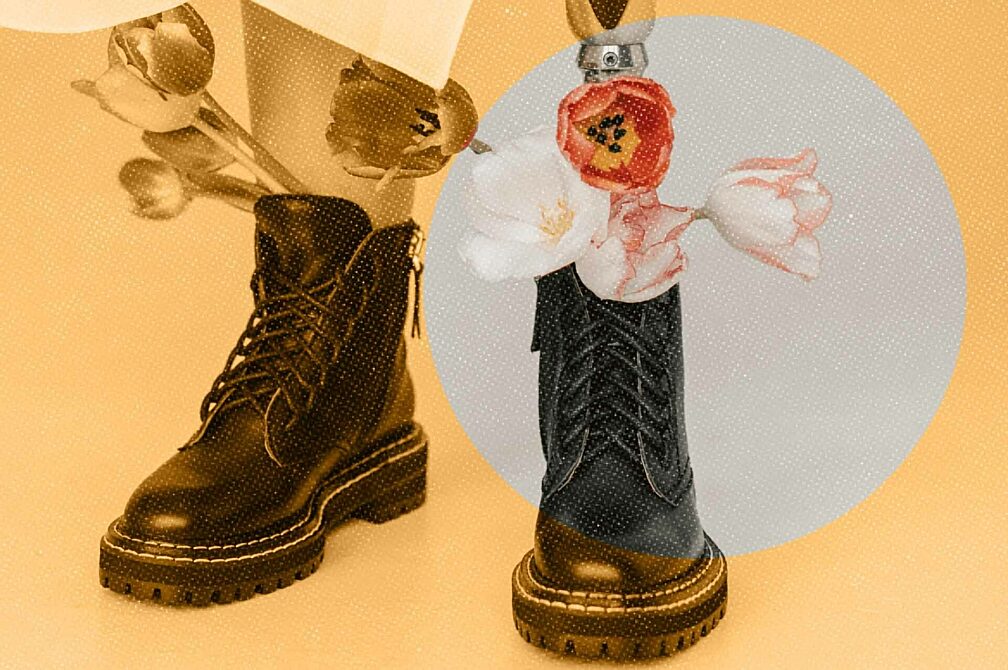Blog
DEI + Culture

Representation matters: How brands can create disability-inclusive marketing
One in four adults in the US has a disability. That’s 61 million+ people. And while 26% of Americans are disabled, they’re seen in only 1% of primetime TV ads (with disabilities severely underrepresented in advertising).
That begs the question: Why? For starters, brands and their creators are simply unaware of the importance of disability inclusion. And like many diversity, equity and inclusion initiatives or barriers, brands are afraid of getting it wrong. There’s a fine line between celebrating, honoring and acknowledging—and exploiting. And that line is dripping in authenticity. They don’t want to alienate or offend people with disabilities, so they leave the group out altogether.
After learning these numbers, I took a hard look at briefs I’ve authored and teams I’ve been a part of to understand how I’ve contributed to this dismal representation. The truth is, I’ve contributed, and now I want to contribute to growing that percentage and advocating for individuals to be represented in a world where they work, live and consume.
Disability inclusion is the right thing to do, plain and simple. It’s also good for business—brands can reach a wider audience and build stronger relationships with their customers. That’s why we’re here, doing what we do, day in and day out.
Apple, well-known for creating some of the most compelling and influential product and social issue ads to date, recently won Best in Show and Best in Discipline for Brand-Side/In-House with its accessibility short film “The Greatest.” And the accolades keep coming in: It’s also been nominated for an Emmy.
Here’s how Apple described “The Greatest” in its submission:
“The film aimed to raise awareness of accessibility innovations created to support people living with disabilities and was crafted to evoke a new attitude in the representation of disability—a celebration of ability in everyday moments, often enabled by Apple technology.”
When I see an ad like this, I’m moved. It’s thought-provoking. It’s arresting. It’s a reminder of how much I take for granted and how important it is for people to see themselves in the work their favorite brands do. For us, it’s work. For customers, it’s a representation of themselves. If they aren’t there—in more ways than one—the connection is lost.
So how can brands create disability-inclusive marketing? Let’s take a few tips from Apple.
- Feature people with disabilities in your ads. You don’t have to include a person with disabilities in every ad you create, but make a conscious effort to include them in your marketing mix and research efforts.
- Make your marketing accessible. This means using closed captions for video ads, providing transcripts for audio ads, and making sure that your website is accessible to people with disabilities.
- Get feedback from people with disabilities. Before you launch your ad campaign, ask people with disabilities to review your ads and give you feedback. This will help you ensure they’re inclusive and respectful. At DS+CO, we have our IDEA panel (Inclusivity, Diversity, Equity and Action), which reviews our marketing in the creation phase and is a representation of diverse voices that help us shape the work.
- Use inclusive language. Avoid using terms like “handicapped” or “disabled” unless they’re used by the person themselves. Instead, use terms like “person with a disability” or “individual with a difference.”
- Empower the audience. Apple does this so well, showing real people with disabilities and how they’re living creative, full and enriched lives. Apple’s technology makes their lives a little easier, just like Apple technology does for those without disabilities. Just in different ways.
Creating disability-inclusive advertising isn’t perceived as an easy task, but let’s go back to that statistic I shared with you at the start: 1 in 4 adults in the US has a disability. So let’s stop making excuses and start with a shift in our mindset. It’s worth the effort to include everyone in our marketing efforts. Embrace it and think of the impact—for people to feel represented and seen, for ourselves to be proud of pushing to reach our total audience, and for brands to make an impact that’s bigger than the bottom line. Courageous marketing goes beyond the work itself.

Rosi Statt
Rosi knows that a solid strategy is the foundation for marketing that works. What drives her though is how that foundation is built: by digging into the research and uncovering insights that unlock inspiration for creative that moves people. Her strategic thinking has led to award-winning work, including National ADDY awards and Best in Show at the Rochester PRisms. But for Rosi, the real win is knowing she’s made a difference for clients. When she’s not leading her team of strategists, she can be found on the sidelines of Victor’s soccer fields, coaching her sons and their fellow teammates.